Today, a large number of varieties and varieties of ficuses are so popular that they are already considered practically as independent plants. In almost all specialized stores, you can wander around a rather spectacular plant called the ficus Panda. This plant is touted by sellers as something special, but in fact it is a blunt ficus variety.
This variety is one of the most spectacular and can be grown not only as a bonsai. Its very dense crown consists of small leaves, which is very attractive for flower growers. However, the plant has a high cost and a very capricious character. Every year, such a ficus is becoming more and more popular, and from a simple plant it has turned into an exclusive one. And this is not unreasonable.
Content
Features of Ficus Panda
Ficus "Panda" is called according to all the rules a dull ficus of the "Panda" variety (Ficus retusa cv. Panda). It is quite easy to recognize it by its characteristic feature, namely, by the blunt-pointed shape of the leaf plates. So, when viewed from a distance, they may seem almost round at the top, but visually perceived as oval. However, this variety has many features that are characteristic of it.
Such an evergreen woody plant is presented in the form of a shrub or develops in a multi-stem form. The plant is highly branching, the stems are quite strong, quickly lignified. As they grow, they deform and become thickened, which facilitates the process of forming a bush and creating a bonsai. The ficus has quite strong and clearly visible aerial roots, which make it very effective. The shoots are covered with beige-gray bark, which has a fairly light shade, while pale streaks are visible only on young branches. Small, very neat leathery leaves look impressive. Young foliage is golden in color, and it seems to glow. They begin to grow at the end of winter, and appear during the entire period of intensive growth. Such leaves became the reason that this ficus is also called "golden ficus".
Also, this plant has a characteristic feature found in dull ficuses. So, young leaves are initially covered with stipules of a light color, which gradually turn yellow and die off. Wide adult leaf plates have an oval or elliptical shape, straight edges and a blunt apex.The leaves can be up to 6 centimeters long and 4 centimeters wide. The leaves are bright in color from dark to medium green, while the seamy surface has a more muted color. The leaves are very shiny and a thin vein of light color is clearly visible on their surface. There are no dots or specks on the surface of the foliage, however, the leaves themselves differ in the saturation of the color, as well as in tone, due to which the plant has a slight watercolor effect. Leaf petioles are thin and short. The arrangement of the sheet plates is alternate with a spiral offset. Moreover, they are very close to each other, from which the crown looks curly and thick.
This kind of ficus has one very important advantage, namely, the unusual fruits of a spherical shape and green color, like decorations shining between the leaves. Flowering is almost imperceptible.
Bonsai
This type of ficus is the best choice for bonsai. In this flower, and without outside help, as it grows, the trunk thickens, as well as its curvature. As a result, very effective lines appear. Unique golden young leaves and fruits favorably distinguish this plant from other ficuses, as well as small leaf plates. Such a flower looks watercolor at any time of the year, since its leaves are painted in a variety of shades of green.
Ficus Panda care at home
The rules for caring for such a plant are very similar to those used for growing other ficuses (only they are a little more complicated). The most difficult thing in caring for this ficus is maintaining a stable environment, namely, it is necessary that the temperature and illumination do not change sharply, and are constantly at the same level. High air humidity is also required and protection from drafts is required. The better you take care of the "Panda", the more elegant and spectacular it will look.
Illumination
Loves light very much. It should be remembered that this ficus differs from the rest in that it cannot grow and develop normally even with a little shading. In summer, it is recommended to protect it from direct rays of the sun, but at the same time it is worth choosing the brightest place for placement. Or you can simply place it on a south-facing window, but at the same time make the light diffused. With the onset of the cold season and a reduction in daylight hours, the flower must be transferred to the most illuminated place, it is also recommended to arrange additional lighting with special lamps.
Those ficuses that form in the form of a bonsai are shade-tolerant, and shade places (partial shade) can be chosen for their cultivation. However, whether it is possible to place the plant in a shaded place, you need to find out during the purchase in the store from the seller.
Temperature
Such a ficus is very fond of warmth and needs stability. The plant may die if the room temperature is less than 8 degrees. And a temperature of less than 15 degrees will lead to the fact that the appearance of the plant will significantly deteriorate. "Panda" feels great at temperatures from 17 to 22 degrees. If the room temperature is slightly higher, then an increase in air humidity will be required.
In summer, it is recommended to move it to fresh air (balcony, terrace), where the plant feels quite well. However, to place it, you should choose a well-protected place, since the plant reacts extremely negatively to drafts and prefers a more stable environment. In this regard, in the absence of a place on the street that would meet all the requirements, it is recommended to leave the flower in the house.
Remember that such a ficus should in no case be affected by drafts. A cold draft, as well as a sharp drop in air temperature in a room, can cause significant harm to it. As a rule, the plant in this case throws off all the foliage.Avoid cooling both the plant itself and the soil in the flower pot. In the autumn-winter period, it is recommended to put a stand under the pot, or you can remove it to some elevation. This will help avoid contact with the cold windowsill.
How to water
Water the plant regularly and in moderation, but the soil in the pot should always be slightly moistened. Water should be abundant in summer. At any time of the year, watering should be done only after the topsoil dries out. Avoid waterlogging of the earth, and especially stagnation of liquid in it, even for a relatively short period. Remember that excessive humidity is more dangerous than drought (but it is also best avoided if possible). Only soft water is suitable for watering. Avoid watering with cold water. In winter, it is recommended to water with lukewarm water, and in spring and autumn it should be at room temperature.
Air humidity
The plant needs high humidity. To increase this value, you can carry out systematic spraying or install a humidifier. You can only moisten foliage with soft water. And it is better to take melted, distilled or boiled water for this purpose.
Fertilizer
The plant is fed only during the period of intensive growth from the beginning of the spring period to October 1 time in 2 or 3 weeks. For this, it is recommended to use special fertilizers for ficuses or complex fertilizers for decorative deciduous plants.
Pruning
Such a plant needs systematic formation. However, pruning is not recommended at the beginning of the period of intensive growth, in the first days of spring, as well as before transplanting, because this procedure greatly weakens the ficus. And in no case should you prune during the transplant process. The plant formation procedure is recommended to be carried out in the first summer weeks or, if necessary, in May. Only the tips of the branches need to be cut, and only branches that are stretched or damaged should be severely shortened. The purpose of this procedure is to make the crown more lush. You can carry out systematic pruning of such a ficus, giving it a more strict or definite shape. He tolerates such procedures quite well, and recovery is quite fast. In those places where the shoots were cut, branching increases and growth accelerates, and the direction of the branches changes, which leads to changes in the silhouette of the ficus.
You can cut branches by 1/3 or 1/2 part only when the flower needs to be rejuvenated or it is in a very depressed state.
As a rule, such a plant needs to be tied up only if you do not grow it as a bonsai. Thin shoots are not able to constantly keep their normal shape, especially when the formation is carried out at the wrong time and the branches become elongated.
Earth mix
For "Panda" it is recommended to choose the soil for ficuses, which is sold in specialized stores. It is best to use a commercial soil mixture, but you can prepare it yourself, for this you will need to combine leaf and sod soil, sand and peat, which must be taken in equal shares. The substrate should pass water and air well, be loose and not too light. You can add a few loosening agents to the mixture, for example, vermiculite. The acidity of the soil should be neutral.
Transplant features
Such a flower is transplanted only if necessary. In adult ficuses, as well as those growing in the form of bonsai, it is recommended that once a year only replace the top layer of the substrate. This procedure is carried out at the beginning of spring, for this you should remove the old topsoil and pour in fresh substrate. It is necessary to transplant such a plant only if the roots no longer fit in the pot.
Young specimens require a regular transplant, carried out once a year. The transplant is carried out by the transshipment method, while the earthen lump must remain intact. The neck should not be buried; it should be left at the same level. Do not forget to make a sufficiently thick drainage layer at the bottom. So, crushed brick and expanded clay are perfect for this. After transplanting, until the ficus begins to grow again, it is shaded and maintained at a higher air humidity than usual.
Such a plant can be grown hydroponically.
Pests and diseases
This variety is not resistant to harmful insects that prefer low air humidity. If the humidity is not kept high, then spider mites, scale insects, and mealybugs may well settle on the plant. In order to get rid of them, it is necessary to remove them by hand and keep the air humidity high. If the infection is too strong, then insecticidal agents will be required.
Possible problems:
- falling leaves with a sharp change in air temperature;
- foliage discharge due to cold draft;
- falling of part of the leaves due to waterlogging of the soil;
- changing the color of the leaves to yellow with excessive watering;
- a change in the size of leaves (shrinking) with insufficient fertilization and low air humidity;
- wrinkling or drying of leaf plates under the influence of direct sunlight and with too dry air.
Reproduction methods
Can be propagated by cuttings in the spring and summer. Cut cuttings are dipped in water for several hours, and then treated with a growth stimulating agent. For rooting, the cutting is placed in a warm place (at least 25 degrees) with high humidity. Bottom heating is required, and it is recommended to cover the stalk with a plastic bag or cap.
Large bushy specimens can be propagated by air layers. A longitudinal incision is made between two strong knots. Then this place must be wrapped with moistened moss or substrate. When the shoot gives roots, it is separated from the mother bush.

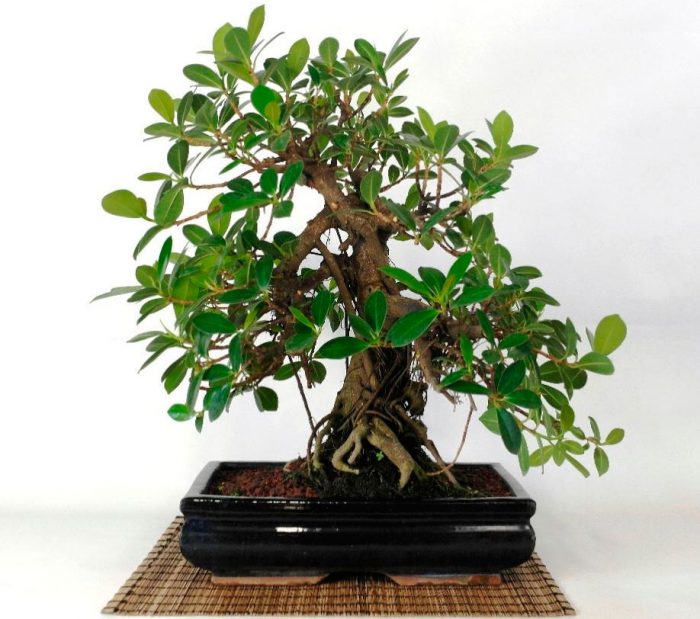
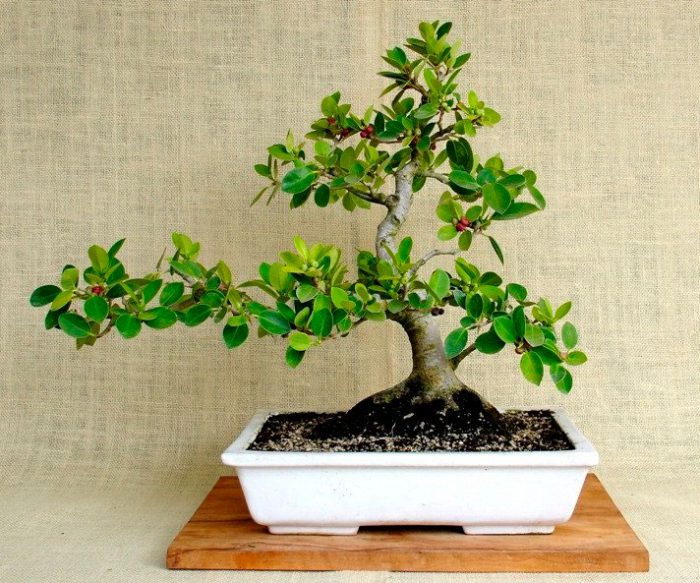
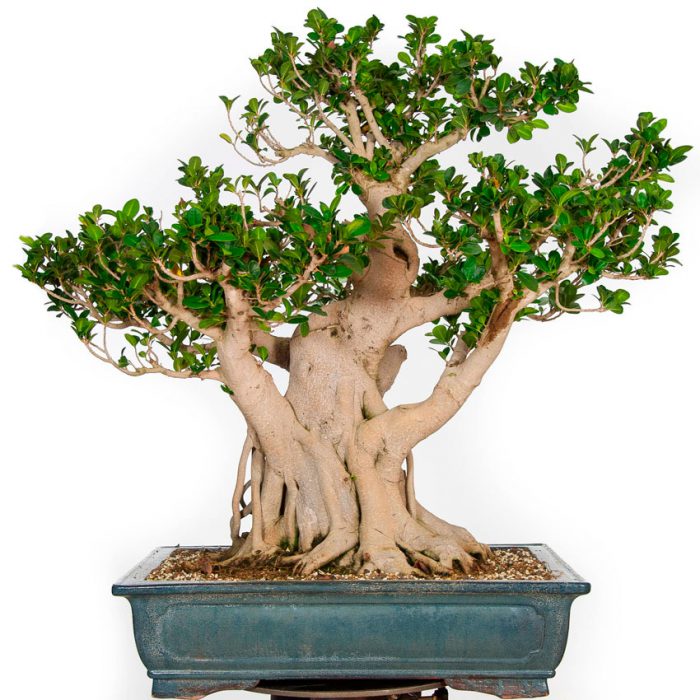
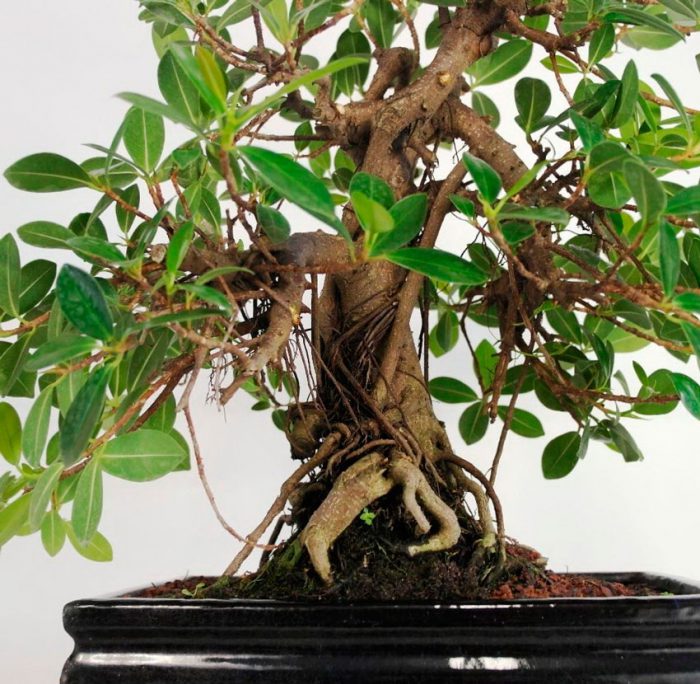
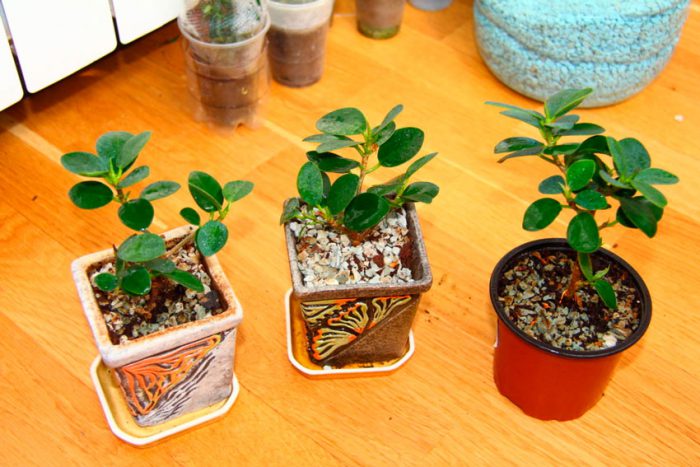
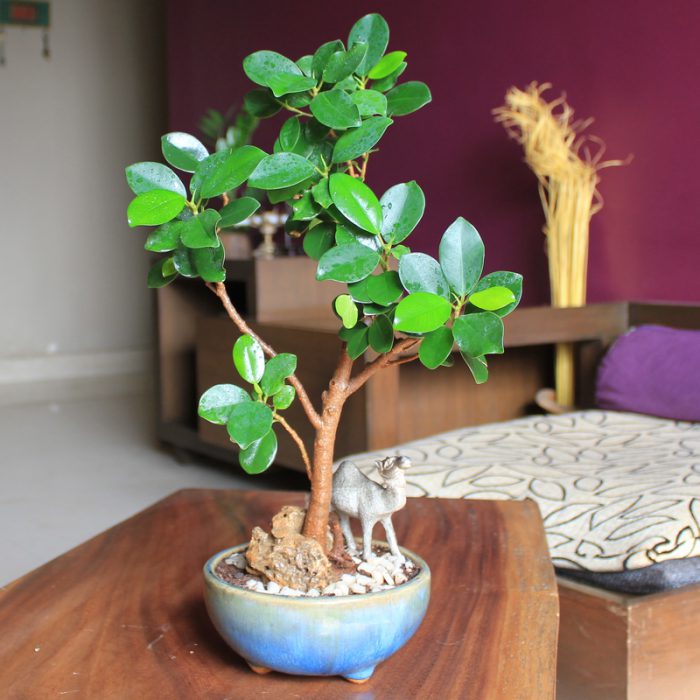
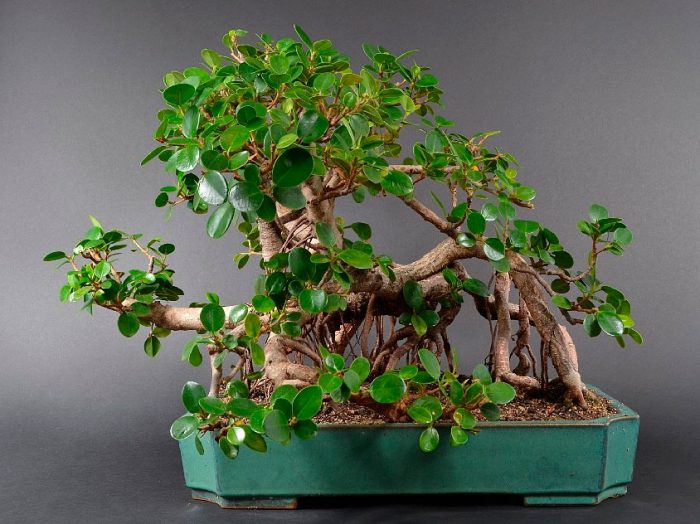
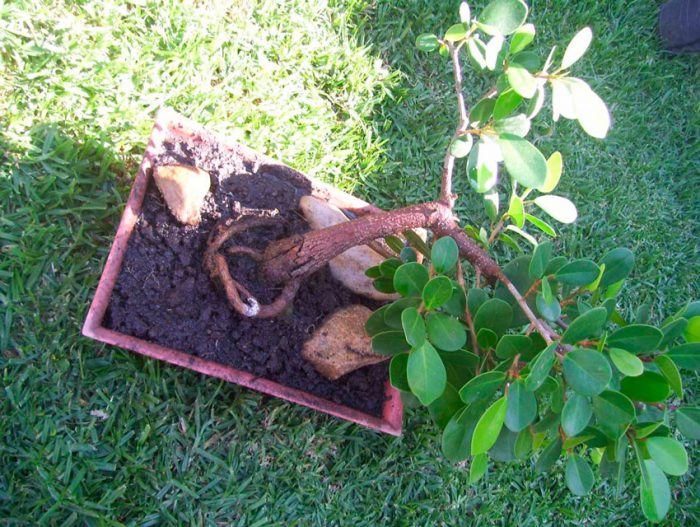

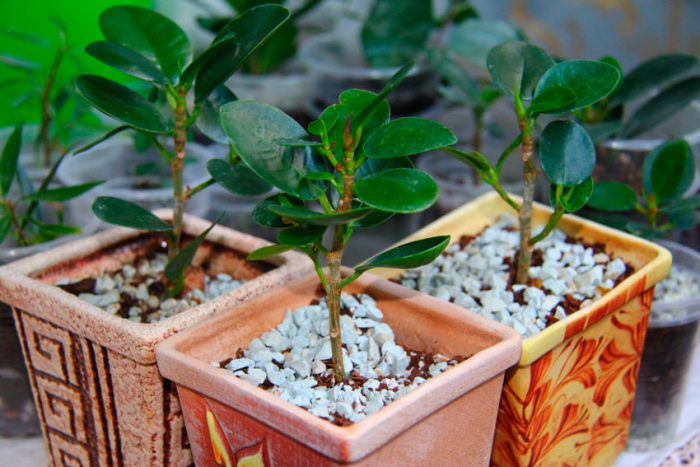
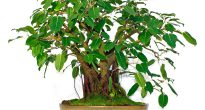

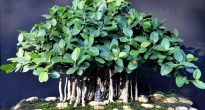





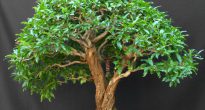

Good evening. I have a bonsai Japanese miniature tree all the leaves fell, some branches remained what can be done help please thanks in advance